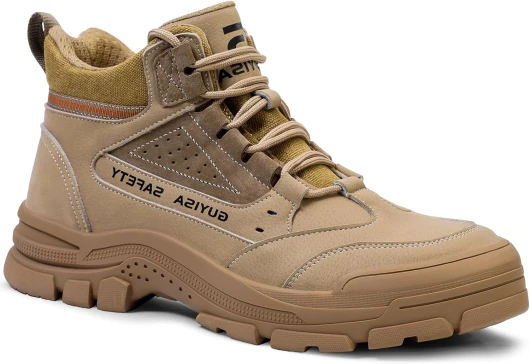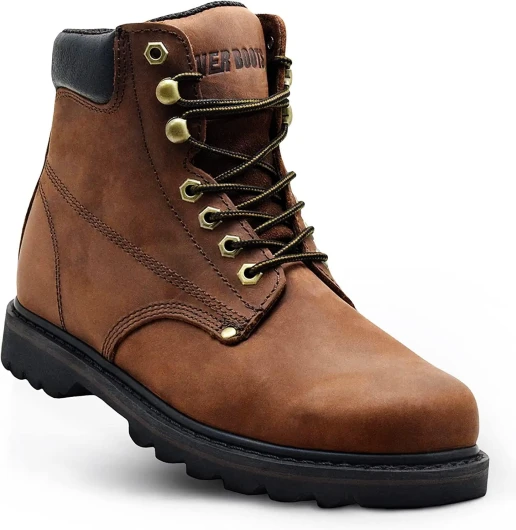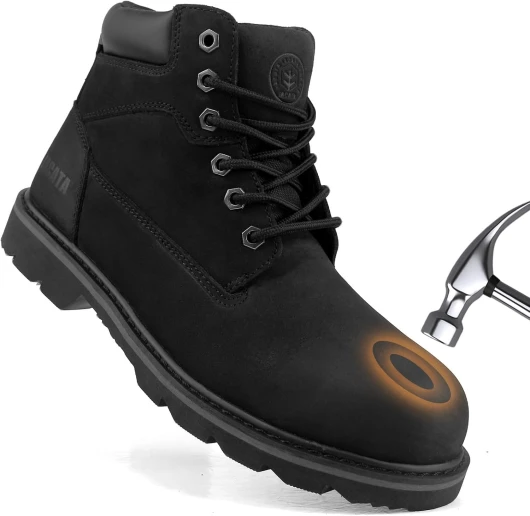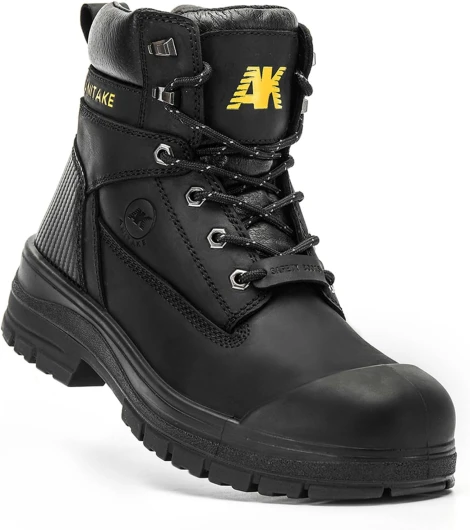
Understanding Steel Shank Boots
Unpacking the Essentials of Steel Shank Boots
Steel shank boots represent a remarkable evolution in outdoor footwear technology. These boots incorporate a metal insert, known as a shank, embedded between the insole and outsole. This critical component enhances a boot's structural integrity, providing essential support and protection for hikers during rigorous outdoor expeditions.
Steel shanks in boots distribute weight evenly across the foot, reducing fatigue and enhancing comfort—a critical factor for those long, challenging trails. Unlike their composite counterparts, steel shanks offer unmatched durability and resilience, making them a favorite among serious hikers. However, they may come with a heftier weight, which needs to be considered when balancing other factors like comfort and ease of movement.
In terms of safety, steel shank boots shine by offering increased stability on uneven terrains, effectively reducing the risk of injury. They serve not only hikers but extend their benefits to those in work environments where safety features like steel toe, electrical hazard protection, and slip resisting soles come into play. Although they are considered an investment in terms of price, the benefits often justify the cost.
When exploring the versatile world of hiking boots, including even ultra-lightweight hiking boots, it's vital to refine features to align with personal needs and trail demands. As we delve further, you'll discover the myriad advantages these boots offer, ensuring your ventures are both safe and comfortable.
Advantages of Steel Shank Boots
Benefits that Make a Difference
Steel shank boots are noteworthy for their durability and support, making them a preferred choice for hikers. The steel shank is a supportive piece placed between the insole and outsole, adding rigidity to the boot and protecting the foot from strain. This feature is particularly beneficial when hiking over uneven terrains or carrying heavy loads.- Support and Comfort: The steel shank aids in distributing body weight evenly across the foot, which can significantly reduce foot fatigue. The added support is essential for long treks, ensuring that the arches and soles remain comfortable throughout the hike.
- Safety Enhancements: These boots often come with safety toes, such as steel or composite toe options. This added protection is ideal for hikers, minimizing the risk of injury from rocks or debris. Additionally, many models include electrical hazard ratings, further enhancing the safety profile.
- Durability: In terms of longevity, steel shank boots are engineered to withstand rigorous conditions. They provide excellent resistance to various hazards, including punctures. Their robust construction is suitable for both hiking and work environments, making them a versatile choice.
- Waterproof Capabilities: Many steel shank boots are designed to be waterproof, keeping feet dry and comfortable during wet weather conditions. The waterproof feature is crucial not only for hiker comfort but also for preventing potential hazards like blisters and fungal infections.
- Versatile Applications: The durability and design of these boots make them a go-to option beyond hiking. They're well suited for work scenarios requiring strong, supportive footwear, particularly in environments with slip, electrical, and penetration hazards.
Choosing the Right Steel Shank Boots
Finding the Perfect Fit for Your Hiking Needs
When it comes to selecting the ideal steel shank boots, understanding your specific requirements is key. The right choice hinges on factors like terrain, hiking activity level, and personal comfort. Here’s a guide to help refine your options.
Consider Your Terrain
If you plan to tackle diverse landscapes, from rocky paths to slippery surfaces, look for boots with slip resisting features. Opt for
waterproof varieties if your hikes often lead through wet conditions. You might also want composite or steel toe boots for added protection against rocky encounters.
Comfort Over Long Distances
Comfort is essential. Look for a comfort-focused design, such as insulated interiors for cold hikes or ventilation systems for summer treks. Steel shank boots with proper padding deliver exceptional
electrical hazard protection and support over long distances.
- Safety Features: Analyze your hazard exposure. Choosing boots with safety toe options, like steel or composite, will protect from potential impacts.
- Price vs. Performance: Balance your budget with the necessary features. Often, pricier items offer advanced technologies, making them suitable for extended hikes.
Finally, don't forget to explore boot width charts to ensure a fit that accommodates foot width and arch type, providing the best support.
Steel Shank Boots for Different Terrains
Adapting to Varied Terrains with Steel Shank Boots
When it comes to hiking across diverse terrains, the choice of footwear can make or break your adventure. Steel shank boots are designed to provide the necessary support and protection for different environments, ensuring that your feet remain comfortable and safe.
For rocky and uneven terrains, the steel shank offers exceptional stability. It acts as a supportive bridge between the heel and toe, reducing the strain on your foot and minimizing the risk of injury. This is particularly beneficial when navigating through challenging landscapes where a misstep can lead to a twisted ankle or worse.
In wet and muddy conditions, waterproof steel shank boots come into their own. The waterproofing technology keeps your feet dry, while the steel shank maintains the boot's structural integrity, preventing it from collapsing under pressure. This combination is crucial for maintaining comfort and safety in slippery environments.
For those venturing into colder climates, insulated steel shank boots provide the warmth needed to keep your feet comfortable. The insulation works alongside the steel shank to offer both thermal protection and support, making these boots ideal for winter hikes.
When considering the price and features of steel shank boots, it's important to refine your choice based on the specific terrain you plan to tackle. Whether you're facing electrical hazards, need slip-resisting soles, or require a composite toe for additional safety, there's a boot designed to meet your needs. By refining your selection, you can ensure that your boots not only fit your budget but also provide the necessary protection and comfort for your hiking adventures.
Ultimately, the versatility of steel shank boots makes them a valuable addition to any hiker's gear collection. By understanding the advantages they offer across different terrains, you can make an informed decision that enhances your hiking experience.
Maintenance and Care for Steel Shank Boots
Tips for Keeping Your Steel Shank Boots in Prime Condition
When it comes to maintaining the quality and durability of your steel shank boots, a few simple steps can go a long way. Proper care not only ensures comfort and safety but also extends the lifespan of your boots.
- Regular Cleaning: Regularly clean your boots to remove dirt and debris. Use a soft brush to avoid damaging the leather or other materials. For stubborn stains, a mild soap solution can be effective, especially if you're dealing with waterproof steel options.
- Drying Techniques: After each use, especially in wet conditions, ensure that your boots are dried properly. Avoid direct heat sources like heaters which can damage the material. Instead, let them air dry naturally.
- Conditioning the Leather: Every few months, use a good quality leather conditioner. This helps in keeping the leather supple and prevents cracking. Conditioning is vital for brown boots which are more prone to visible wear and tear.
- Check the Shank and Toe: Regularly inspect the steel shank and steel toe areas for any signs of wear or damage. Pay attention to the composite toe and safety toe components to ensure they're intact and functional.
- Waterproofing Treatments: Even if your boots are labeled as waterproof, periodic waterproofing treatments can help maintain their resistance against wet conditions. This is especially beneficial for those refined styles used in electrical hazard environments.
By following these tips, you ensure the longevity of your boots, maintaining their safety features like the slip-resisting soles, and keeping them ready for any terrain or weather conditions you might encounter. Additionally, consider storing your boots in a well-ventilated area, avoiding overly humid or dry conditions. Proper maintenance is crucial whether you own insulated work boots or other rugged composite toe models.
Comparing Steel Shank Boots to Other Hiking Boots
Contrasting Features of Hiking Boots with Steel Shank Technology
When delving into the world of hiking boots, one question that often surfaces is how steel shank boots stack up against other hiking options. The durability and protection offered by steel shank boots can be a significant advantage, particularly in rugged terrains. However, it's essential to consider the attributes of each boot style to find the best fit for your needs.- Support and Stability: Steel shank boots are renowned for their support and stability, which can be critical when traversing rocky or uneven terrains. This support might not be as robust in boots without a steel shank, where flexibility is prioritized over rigidity.
- Protection and Safety: For hikers facing potential hazards, the steel toe and shank design offers enhanced protection. Features like toe electrical resistance and slip resistance also add safety, particularly in work boots designed for more demanding environments.
- Weight Considerations: A potential downside to steel shank boots is their weight. While slightly heavier than boots with composite or no shanks, the added weight often translates to more durability and longer-lasting wear, especially under challenging conditions.
- Insulation and Weather Resistance: For cold weather hikes, insulated steel shank boots equipped with waterproof technology stand out. Although some other hiking boots may excel in waterproof features, steel shank boots often provide superior warmth and protection against the elements.
- Comfort and Flexibility: While comfort is subjective, some hikers might find composite toe boots or boots with more flexible materials to offer more immediate comfort. Steel shank boots, however, often require a break-in period to mold to the foot's shape, ultimately achieving a customized fit.


















